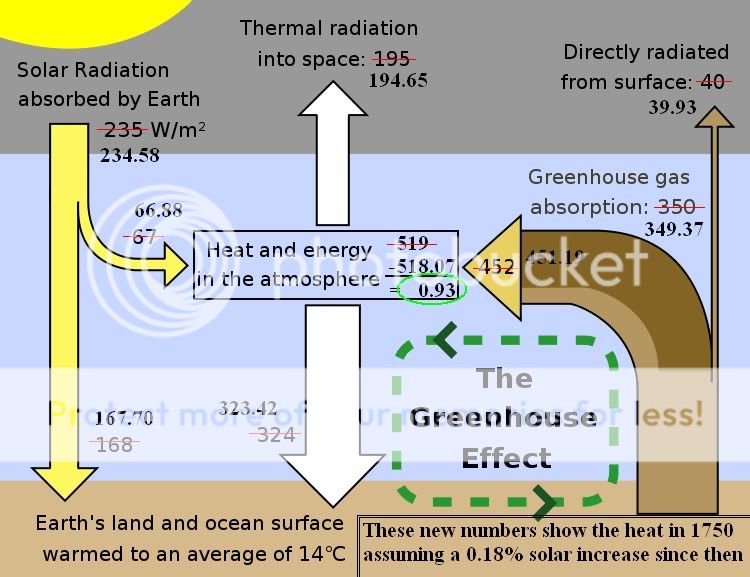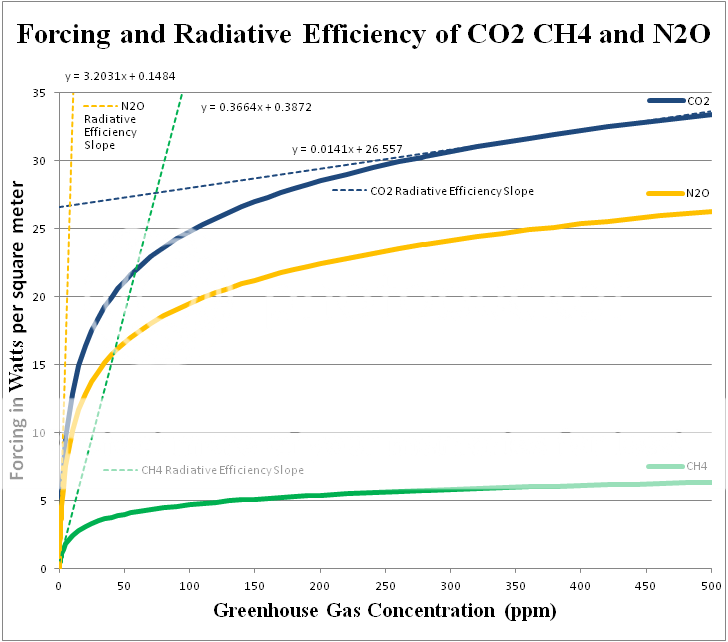- Joined
- Jan 28, 2013
- Messages
- 94,823
- Reaction score
- 28,342
- Location
- Williamsburg, Virginia
- Gender
- Male
- Political Leaning
- Independent
The math involved here is frankly beyond me, but you have to admit the claim should provoke discussion. I have no doubt there will be strenuous objections, and I'll be interested to see whether those are simple denunciations or someone will accept the math challenge.
The IPCC is Wrong
As a factor in Global Warming, increases in the atmospheric concentration of CO2 have been, and will continue to be, largely irrelevant. Guest essay submitted by William Van Brunt Copyright © William Van Brunt, 2016. All rights reserved. Summary The following are the basic principles and assumptions underlying the calculations set out in this paper:…
Continue reading →
. . . The following are the results of the applications of these principles:
A. The change in the Average Global Temperature for Land between 1880 and 2002 was 2.6oF. To effect such an increase requires an increase of 13.8 w/m2 in total Average Heating Power. The Maximum total increase in total Average Heating Power that the buildup of CO2 over this period could have effected is 1.6 w/m2 and the Maximum increase in the Average Global Temperature for Land that the buildup of CO2 over this period could drive cannot exceed 0.3 oF.
B. CO2 is not THE cause nor is it the primary cause of Global Warming
C. The Maximum increase in Average Global Temperature that a doubling of the concentration of CO2 from 400 to 800 ppmv can effect is 0.8oF. The IPCC’s predictions of 3.4oF to 7.9oF are 325% to 900% too high and this would require an increase in heating of 800% to 900% greater than that determined in accordance with the calculation set out in statement 3 above.
D. The IPCC is simply wrong. . . .
The IPCC is Wrong
As a factor in Global Warming, increases in the atmospheric concentration of CO2 have been, and will continue to be, largely irrelevant. Guest essay submitted by William Van Brunt Copyright © William Van Brunt, 2016. All rights reserved. Summary The following are the basic principles and assumptions underlying the calculations set out in this paper:…
Continue reading →
. . . The following are the results of the applications of these principles:
A. The change in the Average Global Temperature for Land between 1880 and 2002 was 2.6oF. To effect such an increase requires an increase of 13.8 w/m2 in total Average Heating Power. The Maximum total increase in total Average Heating Power that the buildup of CO2 over this period could have effected is 1.6 w/m2 and the Maximum increase in the Average Global Temperature for Land that the buildup of CO2 over this period could drive cannot exceed 0.3 oF.
B. CO2 is not THE cause nor is it the primary cause of Global Warming
C. The Maximum increase in Average Global Temperature that a doubling of the concentration of CO2 from 400 to 800 ppmv can effect is 0.8oF. The IPCC’s predictions of 3.4oF to 7.9oF are 325% to 900% too high and this would require an increase in heating of 800% to 900% greater than that determined in accordance with the calculation set out in statement 3 above.
D. The IPCC is simply wrong. . . .




